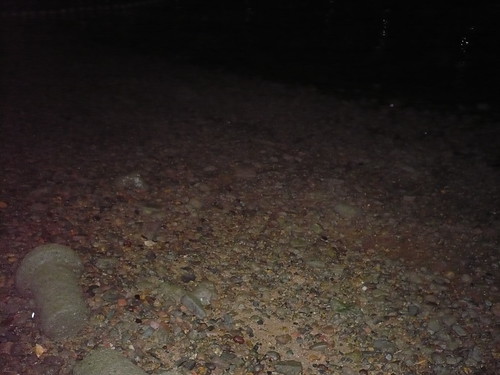
Update: Take a look at what some of the others found, at the wildfilms blog, and God's wonderful creation.
A rocky shore, strewn with pebbles, gravel, and bits of rubble and even man-made debris, might seem barren and lifeless, devoid of the rich biodiversity that can be found on other shores. The waters are murky and loaded with sediment, the rocks are coated with algae and sponges and can be slippery, and the wet sand is mixed with fine silt, so that one sinks a little while walking along the beach. But for an inquisitive and intrepid band of four, this little stretch proved to be a treasure trove of remarkable and beautiful wonders.
This is the first time I'm exploring this area, one of the last natural rocky shores left on Changi, and once again, I found plenty of amazing little creatures that manage to survive despite all the development and pollution that's occurring in Singapore.
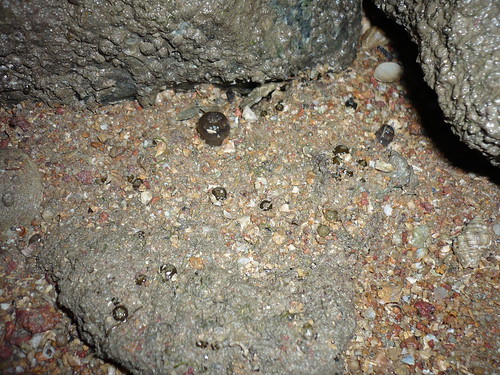
The rocks were pockmarked with these little blobs, which are small anemones waiting for the tide to return.
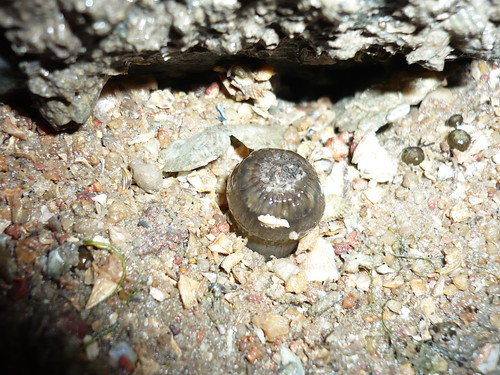
Squatting down and flipping over rocks can yield amazing and marvellous discoveries. Plenty of creatures make their homes beneath the rocks.
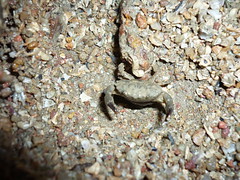



Like these tiny crabs, most of which are barely the size of my thumbnail.
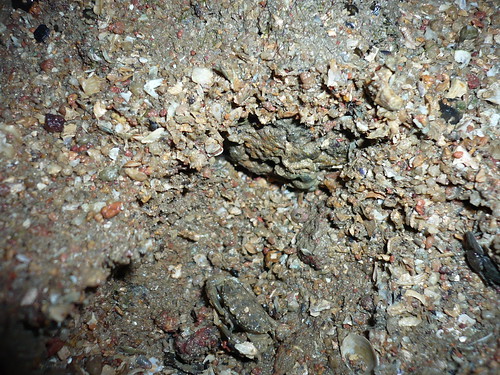
Many of the animals that live amongst rocks are extremely well-camouflaged. Can you see the crab in this photo?
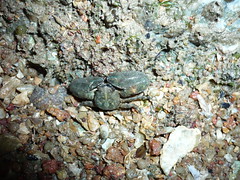
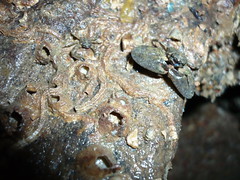
My first ever porcelain crabs (Petrolisthes sp.). Like hermit crabs, these are not 'true' crabs, but belong to a closely related group. Their name comes from the fact that they are quite fragile, and easily shed their limbs when attacked by predators.
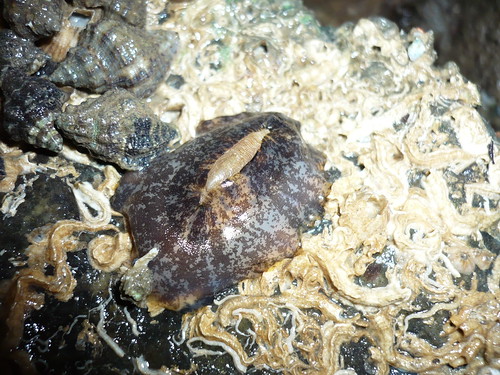
Another first for me: A limpet from the genus Scutus. As you can see, when the snail is alive, its mantle nearly covers the entire shell. Ria says that she hasn't seen these guys in quite a while.
Chay Hoon and Kok Sheng found other interesting creatures just by looking beneath the rocks.
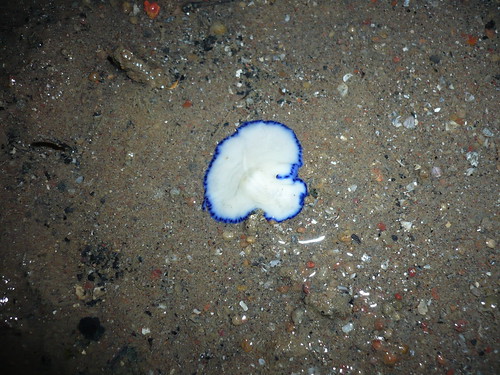
Such as this beautiful flatworm.
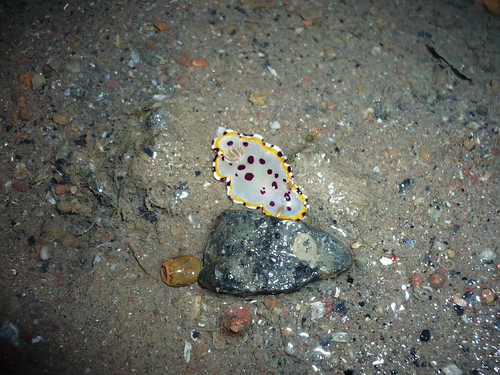
And this nudibranch (Chromodoris tumulifera).
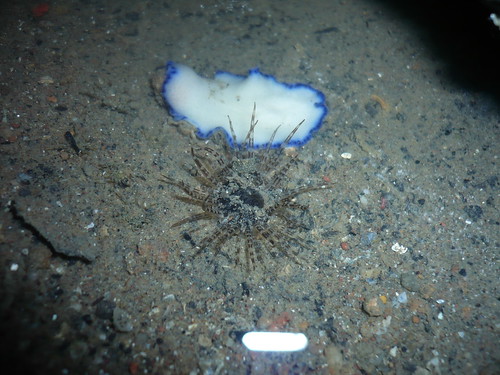
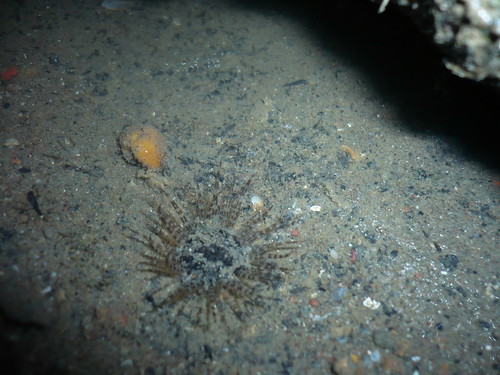
I moved the flatworm to another pool of water, and here it is right next to a small anemone. Yep, those little blobs I posted earlier on really 'bloom' once they're in water.
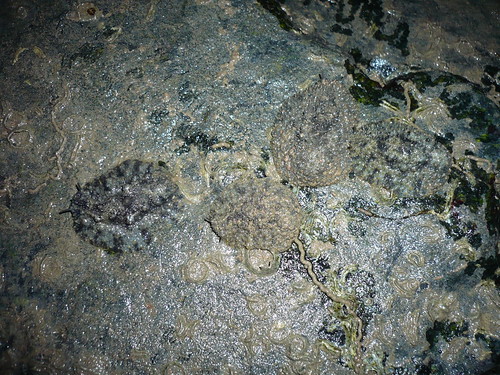
Some old friends I haven't seen for a few months: A quartet of well-camouflaged Onchidium slugs, can you spot them?
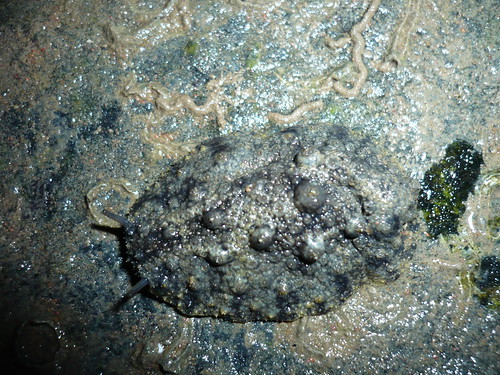
Unlike most marine gastropods, these slugs breathe through lungs. In fact, they are more closely related to terrestrial snails and slugs!
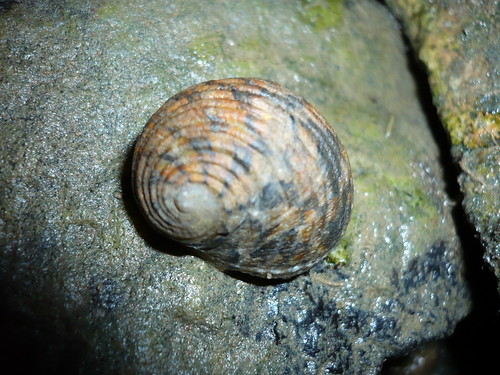

More familiar old friends: a bunch of nerites (possibly Nerita chamaeleon and N. squamulata). I have a soft spot for these snails, since they were among the first of the shore organisms to catch my eye when I started exploring the shores as a young child.

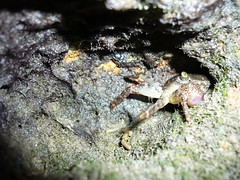

Some of the rocks get quite huge, and if you look inside the crevices, you might find purple climber crabs (Metopograpsus spp.)
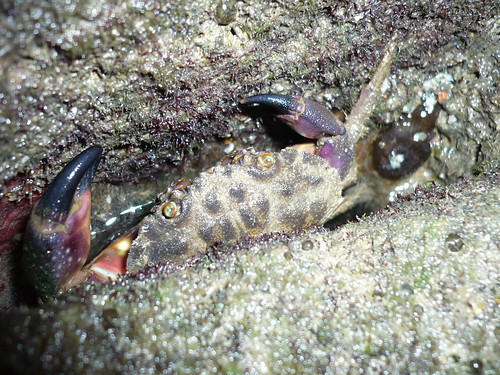
This medium-sized crab was hiding in another crevice. I think this is a menippid of some sort.
Many of the creatures you find on the rocky shore are so well-camouflaged, it takes a trained eye to spot them.
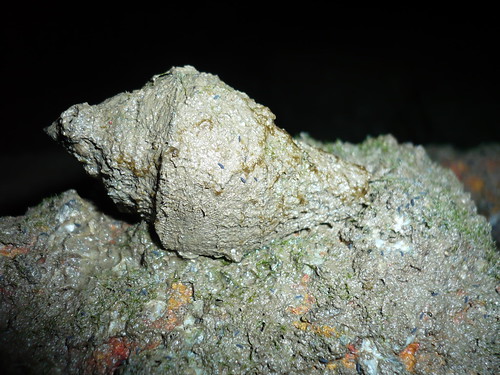
Like the spiral melongena (Pugilina cochlidium). This is a relatively large snail, which has 'hairs' on its shell that trap mud, sediments and other debris, allowing it to hide in plain sight.
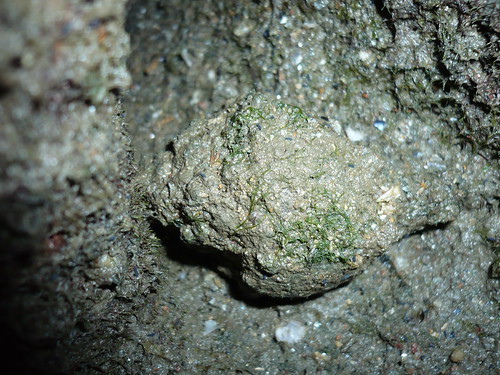
Does this even look like a snail to you?
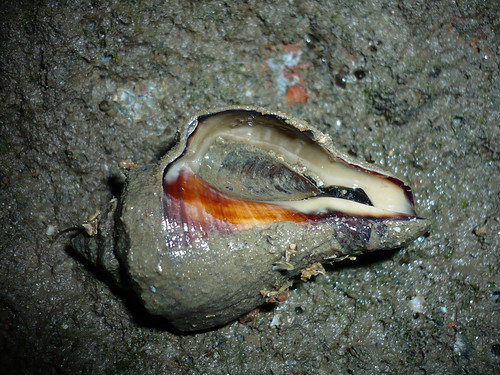
The underside of the spiral melongena. This is a predator that specialises on barnacles.
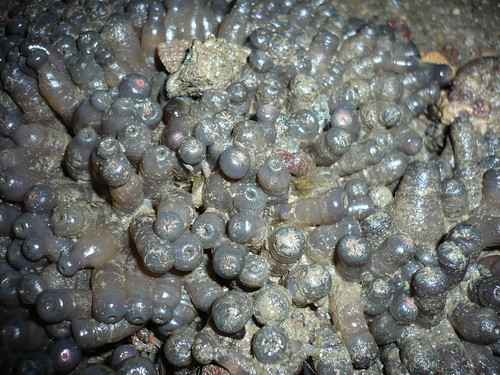
There are plenty of zoanthids (also known as 'colonial anemones') on this shore, all waiting to be submerged by the tide once more.
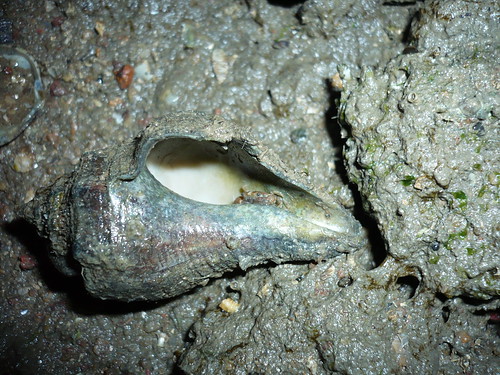
Another spiral melongena, this time a dead one. I was expecting to find a hermit crab occupying the empty shell, but instead, I find a tiny little crab.
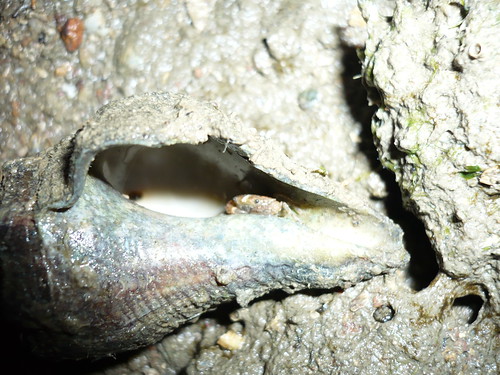
It's so outrageously tiny compared to the shell it is hiding in!
One of the thrills of exploring a rocky shore is that you don't quite know what you may find when you flip the next rock.
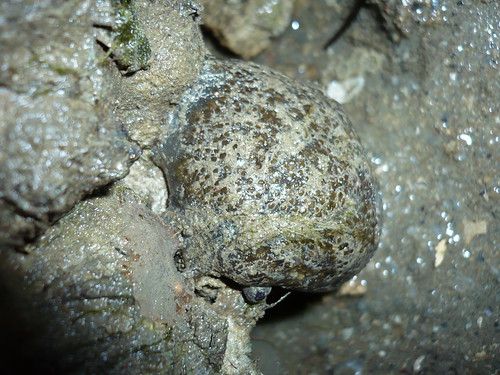
Like this brown blob. What could it be? Sponge? Anemone? Tunicate? Sea cucumber?
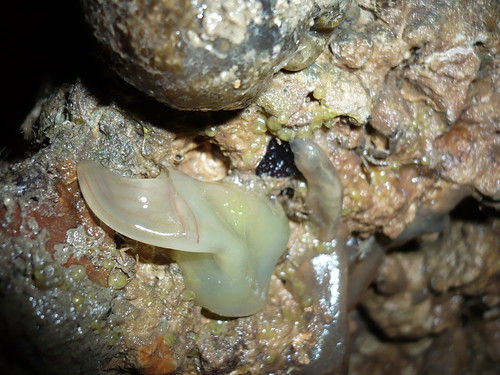
Similarly, I have no idea what these pale translucent things are.

If you look very carefully in the small pools of water along the shore, you will find tiny little gobies.
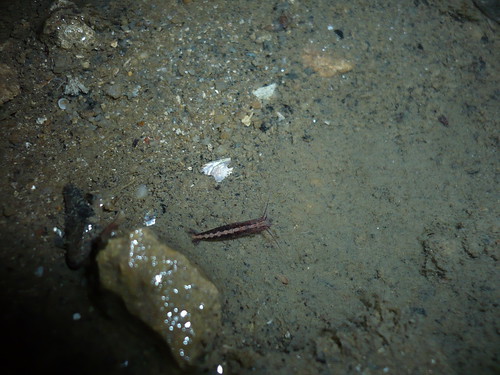
And small groups of tiny little shrimp as well. This shrimp is barely a centimetre long!
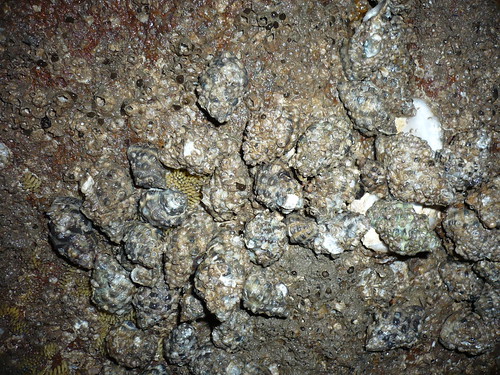
Clusters of drills (Thais and Morula spp.) can be found on the rocks. Believe it or not, these are voracious predators, feeding on barnacles and bivalves.

Further down, we find yet another nudibranch! This one's a Hypselodoris, possibly H. infucata.
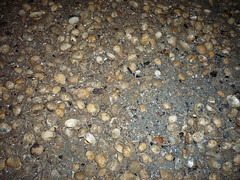

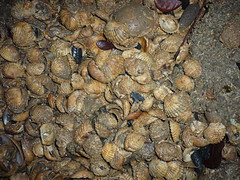
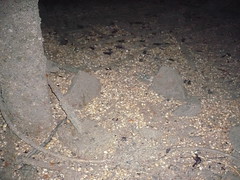
The shore here is literally carpeted with the shells and shell fragments of blood cockles (Anadara spp.), along with other bivalves. Among the cockles, I managed to spot the remains of venus shells, oysters, mussels, and other assorted clams.
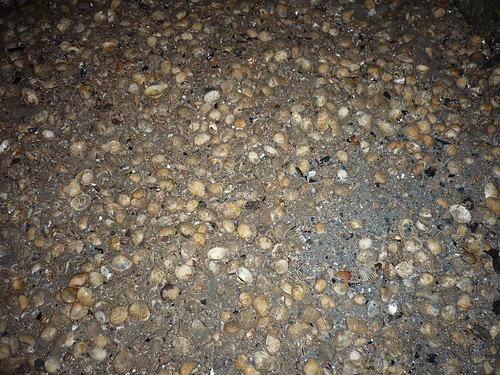
Many of these cockles are probably still alive, though I couldn't really be bothered to rummage among the empty shells to find the live ones.
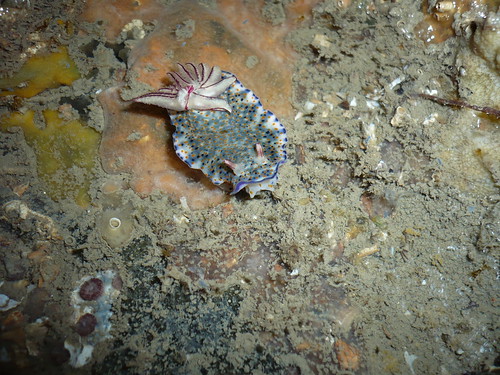
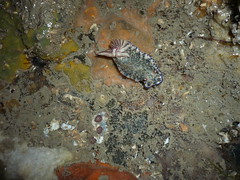

We found yet another Hypselodoris nudibranch in the same area.

One more was spotted sitting right next to some sponges, which might serve as its source of food, but my photo-taking skills are still too shitty, and all my photos of this individual are blurry. So here's a much better one by Kok Sheng.
The water is very murky, but at one spot, Chay Hoon and I could see blades of seagrass sprouting up amongst the cockle shells.

I swear, this pearl conch (Laevistrombus turturella) was so feisty, it tried to stab my fingers with its serrated operculum.
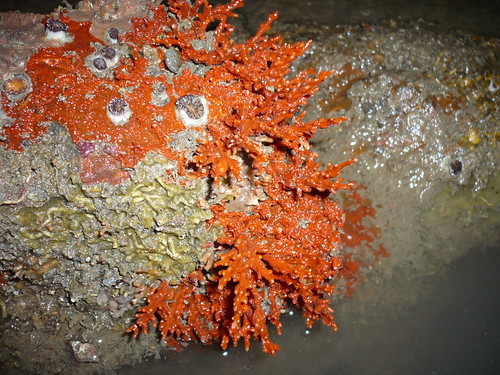
Isn't this red branching sponge pretty?
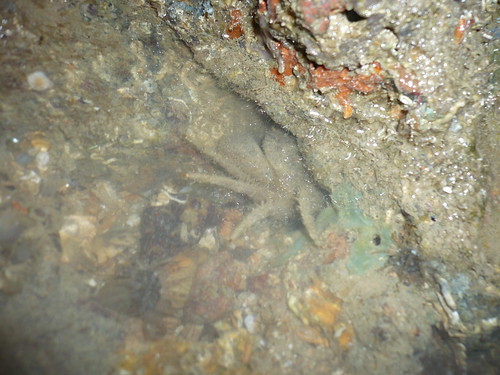
This crab was hiding beneath a rock. It slipped out of sight before I could get a closer look and identify it though. It doesn't look at all like the hairy crab (Pilumnus vespertilio) commonly found on our shores. Looking up the guidebooks, I have a funny feeling it could be Actaeodes hirsutissimus, which I have not encountered before.
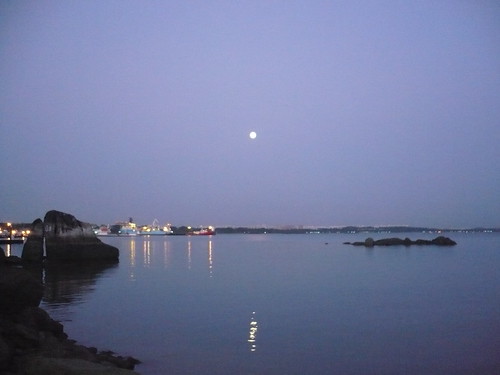
As dawn slowly breaks, we are treated to a spectacular view. The birds begin to call; the raucous laughter of the collared kingfisher (Todiramphus chloris), the melancholic whistling of the Asian koel (Eudynamys scolopacea), the strangled crowing of the red junglefowl (Gallus gallus), and at one point in time, we even manage to hear the goose-like honks of a distant white-bellied sea eagle (Haliaeetus leucogaster).
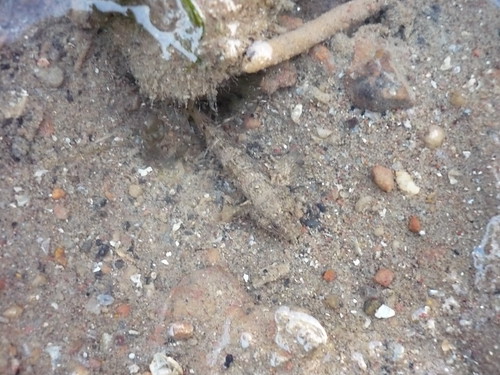
There's a pistol shrimp hiding together with this small goby. Can you see it?
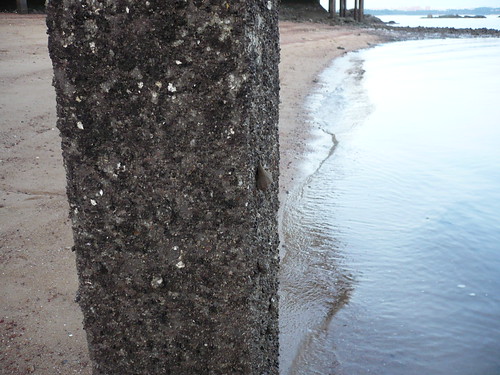
This spiral melongena was found all the way up the pillar, at chest level. I wonder why. Was it feeding on the barnacles? Or was it left high and dry when the tide receded?

Here's another common friend, a tidal hermit crab (Diogenes sp.), hiding inside the empty shell of a 'chut-chut' (Cerithidea obtusa).
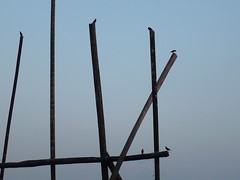
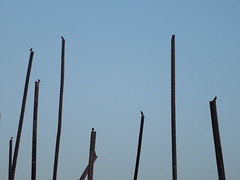
The Asian glossy starlings (Aplonis panayensis) love to hang out on these kelong poles.
So many hidden marvels, waiting to be uncovered by those willing to open their eyes to the beauties of this shore.
There's more coming up. Echinoderms, things you shouldn't touch, and death on the shores. Stay tuned...
This is part 1 of a 4-part series on a trip to Changi on 21st May, 2008.
Part 1: Changi's Hidden Wonders (this post)
Part 2: Echinoderm Hangout
Part 3: Do not touch!
Part 4: Death on the shores